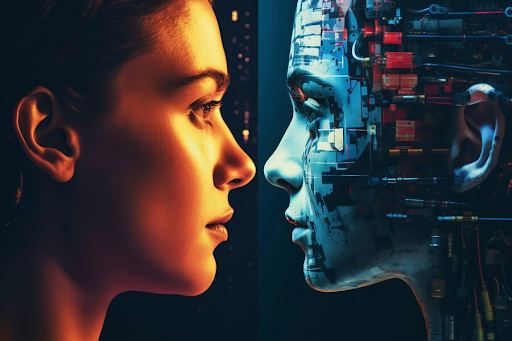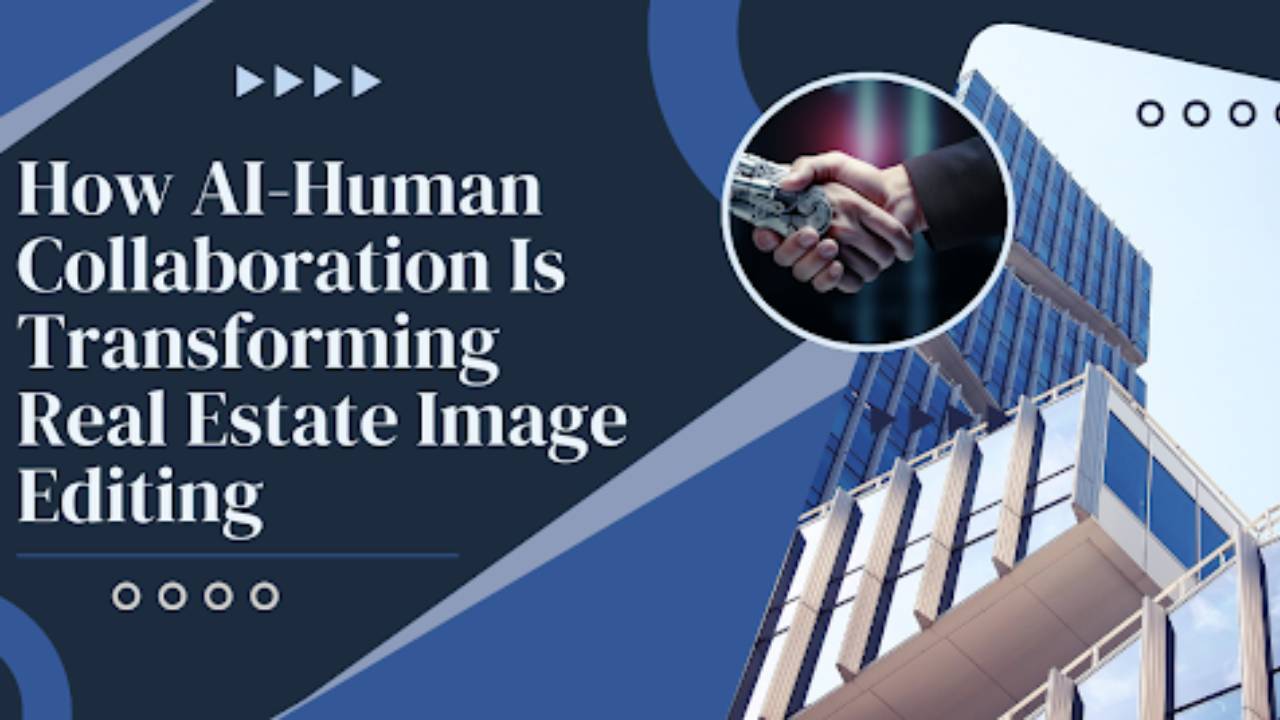Picture this: You’ve just listed a property for sale. The location is ideal, and the pricing is competitive, yet weeks pass without a single viewing request. Frustrated, you wonder, “Why isn’t my property selling?”
The answer may be more apparent than you realize – your listing photographs.
In today’s visually driven real estate market, a property’s initial presentation occurs not at an open house but online. Subpar images—out of focus or inadequately lit—could potentially diminish your property’s value by thousands.
Fortunately, recent advancements in AI have revolutionized real estate photo editing, offering powerful tools to enhance images quickly and efficiently. But here’s the million-dollar question: While AI tools streamline the editing, is human involvement still necessary? Or can AI alone save the day (and your sales)?
Here, we examine the impact of AI-powered photo editing on real estate ROI while considering why human expertise still reigns supreme with some real-world case studies and examples.
The Role of Photographs in Real Estate
The adage “a picture is worth a thousand words” is particularly relevant in real estate. Photos often serve as the first point of contact between a property and potential buyers, playing a critical role in the sale process.
Real estate experts widely acknowledge that listings with professionally clicked and enhanced photos tend to attract more views and generate higher levels of interest from potential buyers. This increased attention can lead to faster sales and even higher selling prices.
Case studies further illustrate this point.
- A luxury condo in Miami struggled to attract buyers for months with its low-quality listing photos. After engaging a real estate photo editing professional who applied various image retouching techniques (sky replacement, virtual staging, color correction, etc.), the listing saw a 300% increase in online views within the first week.
- A modest suburban home in Seattle initially used smartphone photos clicked by the homeowner, resulting in dark, cluttered images that failed to showcase the property’s potential. They decided to leverage professional real estate image editing services to enhance the images. As a result, the listing received multiple offers within days, ultimately selling for $25,000 above the asking price.
These success stories highlight the transformative power of high-quality photos in real estate listings. As we move forward, we’ll explore how AI for real estate photo editing is evolving, offering new possibilities while also presenting unique challenges. We’ll also examine how human expertise complements AI capabilities, creating a collaboration that enhances the impact of listing photos and drives real estate success.
Introduction to AI-Powered Photo Editing

AI-powered photo editing tools utilize artificial intelligence and machine learning algorithms to enhance digital images. These advanced tools analyze photos, identify key elements, and make adjustments to improve quality and appeal. Notable examples of AI photo editing software include Adobe Photoshop with its AI features, Luminar AI, and Aurora HDR.
Advantages of AI-Assisted Real Estate Image Editing
AI-powered photo editing brings several significant advantages to real estate owners and agents, revolutionizing the way properties are presented online. Here are some benefits.
1) Efficiency: AI tools can edit hundreds of photos faster than human editors. This speed is particularly beneficial in the fast-paced real estate market, where time is often of the essence. For example, an AI tool can simultaneously process dozens of property photos, adjusting elements like exposure, color balance, and sharpness. This rapid turnaround allows agents to list properties faster, potentially leading to quicker sales.
2) Consistency: AI algorithms ensure each photo is edited to the same standard, eliminating variations that can occur with manual editing. This uniformity is crucial for creating a cohesive look across a property’s photo portfolio.
3) Cost Savings: By automating repetitive image enhancement tasks, AI reduces the need for extensive manual editing, making the photo editing process more cost-effective for real estate agents. For example, AI can quickly enhance HDR images, correct color imbalances, or perform virtual staging – which might take human editors hours to complete manually. This allows property owners to get multiple photos without incurring the high costs typically associated with outsourcing real estate photo editing services or hiring in-house staff.
Disadvantages of AI-Assisted Real Estate Image Editing
Despite its advantages, AI for real estate photo editing has its set of limitations:
1) Lack of Creativity: AI tools operate based on pre-programmed algorithms and learned patterns. While highly efficient, it lacks the creative vision and artistic intuition human editors bring to their work. AI cannot make subjective decisions about what “feels right” or understand the emotional impact of subtle adjustments. For example, it might balance the exposure in a room, but it won’t understand that slightly overexposing a window view can create a sense of brightness and openness that appeals to buyers. These nuanced artistic choices often make the difference between a good photo and a great one.
2) Potential for Over-Editing: In its quest for “perfection,” AI can sometimes push edits too far, resulting in photos that look artificial or unrealistic. This is particularly problematic in real estate, where authenticity and accuracy are crucial. Common issues include:
- Oversaturated colors that make interiors look flashy
- Excessive sharpening that creates an unnatural, hyper-detailed look
- Overuse of HDR effects, leading to flat, unrealistic lighting
- Aggressive noise reduction that erases texture and detail
3) Failure to Capture Essence: While AI tools excel at technical enhancements, they struggle to highlight a property’s true appeal or distinctive features. Unlike human editors, they might overlook subtle details that make a property special. For example, in a historic property, AI could miss emphasizing intricate architectural features or the warm ambiance of a room. This limitation could result in visually correct but less engaging listings that fail to showcase a property’s true appeal, potentially reducing buyer interest.
The Unmatched Value of Human Expertise in Real Estate Photo Editing
While AI has made significant strides in photo editing, the human touch remains irreplaceable in creating truly captivating real estate imagery. Real estate photo editing professionals bring a unique set of skills and perspectives that AI cannot replicate:
1. Creative and Artistic Vision
Human editors possess an innate understanding of aesthetics, composition, and visual storytelling. They can:
- Enhance images to highlight a property’s best features while skillfully downplaying less attractive elements
- Adjust lighting and color to set a mood or create a sense of space
- Retouch and refine images to guide the viewer’s attention through the property in an engaging way
For example, a real estate photo editing expert might choose to subtly brighten a kitchen photo, adjust the color balance to make it feel warmer and more inviting, or even remove minor distractions that detract from the overall appeal. They might also crop the image at a slight angle rather than straight-on, creating a sense of depth and showcasing both the countertops and the overall layout simultaneously. This type of nuanced, context-aware decision-making is currently beyond the capabilities of AI systems.
2. Understanding of Trends and Buyer Preferences
Professional real estate photo editors stay attuned to current market trends and buyer preferences, allowing them to tailor their retouching approach accordingly. They understand that:
- Buyer preferences for property photos vary across different market segments (for instance, luxury home buyers may favor images emphasizing elegance or high-end finishes, while first-time homebuyers might be more drawn to photos highlighting practical living spaces and storage solutions)
- Certain features should be emphasized based on current market trends and broader buyer interests (e.g., showcasing versatile spaces that could serve as home offices or learning areas, reflecting post-pandemic lifestyle changes)
- Local market conditions might influence how a property is showcased. For example, in a coastal area prone to hurricanes, photos might highlight storm-resistant features or elevated construction, while in a region with extreme temperatures, images could focus on energy-efficient systems and insulation to appeal to cost-conscious and environmentally aware buyers.
This market awareness enables human editors to make informed decisions about enhancing photos in ways that resonate with target buyers.
3. Ability to Capture the Unique Essence of a Property
Every property has its own character and selling points. Human editors excel at:
- Identifying and enhancing unique features that set a property apart
- Preserving and amplifying the “feel” of a space, not just its visual appearance
- Tailoring their editing approach to highlight the best aspects of each property
For example, when reaching out to experts to edit compact urban apartment images, real estate photo editing service providers might subtly adjust perspectives to make the space feel larger while still maintaining a realistic representation.
Examples of How Human-Edited Real Estate Photos Have Surpassed AI-Edited Images
Consider the case of a luxury beachfront property in Malibu. The AI-edited photos were technically perfect – well-exposed, color-corrected, and sharp. However, the human-edited photos told a story:
- They captured the golden light of sunset reflecting off the waves, creating a warm, inviting atmosphere.
- The composition drew the eye from the interior living space to the ocean view, emphasizing the indoor-outdoor lifestyle.
- Subtle adjustments to contrast and color grading created a cohesive look across all images that evoked a sense of high-end, coastal living.
The human-edited photos not only showed the property but also conveyed the lifestyle it offered, resulting in multiple offers within days of listing.
Another example comes from a historic brownstone in New York City. While AI editing cleaned up the images and balanced the exposure, human editors:
- Preserved the rich textures of original woodwork and plasterwork, which the AI had smoothed out
- Subtly enhanced the warm tones of the interior to create a sense of coziness and history
- Carefully balanced the bright window light with the interior exposure, creating a natural, inviting look that the AI’s HDR processing had flattened
These nuanced edits resulted in photos that accurately represented the property while capturing its unique character and charm, leading to a sale above the asking price.
Outcome: AI is not a replacement but an assistant
The human touch in real estate photo editing brings a level of nuance, creativity, and market understanding that AI is yet to match. While AI tools can handle many routine tasks efficiently, it’s the human involvement that transforms good real estate photos into great ones, creating connections with potential buyers and ultimately driving better results for sellers.
Finding the Right Balance: Human-AI Collaboration for Optimal Results

The future of real estate photo editing lies not in choosing between AI and human expertise but in finding the optimal balance between the two. By leveraging the strengths of AI tools and human creativity, real estate dealers can achieve superior results in their property listings. Here’s how this collaboration can work:
1. AI as a Supporting Tool for Human Editors
AI can handle basic, routine tasks like saturation/brightness/color adjustment, allowing human editors to focus on creative and strategic aspects:
- Fine-tuning exposure and color grading to capture the property’s atmosphere
- Retouching to enhance architectural features
- Strategic cropping and composition adjustments
- Removal or mitigation of distracting elements
- Advanced HDR blending for natural-looking, high-impact images
- Applying local adjustments to guide viewer attention
By handling rudimentary tasks, AI enables human editors to invest more time in these nuanced, high-level enhancements that truly showcase a property’s unique features and appeal to potential buyers.
2. Workflow Integration
An effective workflow might look like this:
- a) Initial AI processing: Run photos through an AI tool for basic enhancements and corrections.
- b) Primary review and adjustment: A professional editor can review the AI-processed images, making necessary corrections and creative enhancements.
- c) Implementation of Human-directed techniques: Editors can perform complex tasks like sky replacement or virtual staging using AI tools, as needed while ensuring results align with the market expectations.
- d) Final refinement: The real estate image editing experts make the final adjustments to ensure consistency, realism, and alignment with the property’s unique features.
The Intersection of AI-Powered and Human-Assisted Editing: Impact on Real Estate ROI
The debate between human expertise and AI for real estate photo editing isn’t just about aesthetics—it’s about bottom-line results. This section will explore how human-edited photos stack up against AI-edited alternatives in terms of sales and return on investment.
Comparative Analysis: AI-Edited vs. Human-Edited Photos on Real Estate ROI
Several studies and real-world examples highlight the superiority of human-edited photos in driving property sales.
- Case Study 1: Urban Condo Listing
Background: Two real estate agencies listed an urban condo in a bustling city centre. Agency A utilized AI-powered photo editing tools to enhance its property photos, while Agency B employed a professional photographer and editor for manual photo editing. Both agencies listed the condo at the same initial price.
| Criteria | AI-Edited Photos (Agency A) | Human-Edited Photos (Agency B) |
| Editing Tools Used | Luminar AI, Aurora HDR | Adobe Photoshop, Lightroom |
| Turnaround Time | 1 day | 3 days |
| Cost | $100 for AI editing software | $300 for real estate image editing services |
| Listing Views | 2,500 | 4,500 |
| Inquiries | 20 | 50 |
| Final Sale Price | $490,000 | $520,000 |
| Time on Market | 45 days | 30 days |
| Buyer Feedback | Photos were appreciated for clarity but were described as slightly “over-processed” by some potential buyers. | Photos were praised for their warmth, natural lighting, and ability to capture the condo’s unique features. |
- Case Study 2: Suburban Family Home
Background: A spacious family home in a suburban neighborhood was marketed by two different real estate agencies. Agency X used AI-powered editing to prepare the property photos, while Agency Y hired a professional editor. Both agencies listed the property at the same initial price.
| Criteria | AI-Edited Photos (Agency X) | Human-Edited Photos (Agency Y) |
| Editing Tools Used | Adobe Photoshop Elements with AI features | Adobe Photoshop, Lightroom |
| Turnaround Time | 2 days | 4 days |
| Cost | $150 for AI editing tools and software | $400 for professional photography and editing |
| Listing Views | 3000 | 6000 |
| Inquiries | 25 | 60 |
| Final Sale Price | $580,000 | $610,000 |
| Time on Market | 50 days | 25 days |
| Buyer Feedback | Buyers found the photos clear and well-edited, but some mentioned they appeared too perfect and lacked a realistic touch. | The photos were described as inviting and realistic, effectively showcasing the home’s charm and family-friendly features. |
The Takeaway
Human-edited real estate photos consistently outperformed AI-edited images despite higher costs and longer turnaround times. Properties with professionally edited photos sell faster, often above the asking price, and generate significantly more online interest.
In today’s competitive, digital-first real estate market, investing in human-managed photo editing services is a proven strategy for maximizing ROI. While AI tools can support the process, the creative vision and market insight of skilled human editors remain unmatched in effectively showcasing properties and driving superior sales outcomes.
The next question is,
How and Where to Find Professional Real Estate Image Editing Professionals?
Finding professional real estate image editing professionals is essential for ensuring your property photos are of the highest quality. Here’s how you can locate and select the best real estate photo editing services:
-
Freelance Platforms
- Websites like Upwork or Fiverr host numerous professional editors
- Advantages: Wide range of skill levels and price points; ability to review portfolios and client feedback
- Tips: Look for editors with your niche-specific experience and positive reviews
-
Professional Photography Associations
- Organizations like PPA (Professional Photographers of America) often have member directories
- Advantages: Vetted professionals; adherence to industry and ethical standards
- How to access: Check association websites for member listings or referral services
-
Dedicated Real Estate Photo Editing Services
- Companies specializing in real estate image editing and post-processing
- Advantages: Streamlined services, familiarity with real estate-specific needs
- How to find: Online searches for “real estate photo editing services”
-
Local Networking
- Connect with real estate agents or brokers in your area for recommendations
- Attend real estate industry events or photography meetups
- Advantages: Personal referrals; potential for long-term professional relationships
-
Online Real Estate Communities
- Forums and social media groups dedicated to real estate professionals
- Platforms like LinkedIn can be valuable for finding and vetting editors
- Advantages: Peer recommendations, industry-specific discussions
When selecting a professional, consider the following:
- Review their portfolio, focusing on real estate-specific work
- Ask about their familiarity with local real estate market preferences
- Know about their reliance on AI image editing tools and software
- Discuss their process, turnaround times, and pricing structure
- Inquire about their approach to balancing enhancement with realistic representation
- Consider requesting a trial edit to assess their skills and compatibility with your needs
What’s Next?
As the real estate industry evolves in the digital age, the synergy between AI technology and human expertise will undoubtedly shape the future of property marketing.
To stay ahead in this competitive market, we encourage you to take action today: evaluate your current photo editing process, explore collaborations with reputable real estate photo editing service providers, and consider implementing a hybrid AI-human approach. Experiment with different strategies and measure their impact on your listings’ performance. The future of real estate marketing is here – it’s time to ensure your visual content strategy is ready to meet it.





